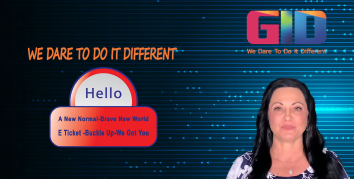AI in product development is no longer a futuristic promise—it is the foundation on which modern innovation is built. In 2025, organizations that adopt advanced intelligence will outpace their peers in agility, efficiency, and market fit. At GID Company, we see firsthand how integrating these technologies unlocks creative potential, reduces time to market, and elevates product success across geographies from California to Georgia, Florida to Utah.
As we guide clients in states like Texas, Arizona, and beyond, our mission is not merely advisory; we embed AI capability within product workflows. In this article, we will explore how artificial intelligence product design, machine learning in product development, and AI tools for product designers are reshaping the product lifecycle. You’ll also see how GID Company’s unique methods turn these possibilities into practical, scalable outcomes for firms of all sizes.
We begin with a deep dive into how “AI in product development” has evolved, why 2025 represents an inflection point, and how GID Company positions itself to lead that transformation.
The Rise of AI in Product Development
From Automation to Intelligence
In the earlier decades, product development relied on rule‑based automation and modular engineering. Today, AI in product development is about systems that reason, learn, and generate solutions with minimal human prompting. Rather than scripting fixed workflows, designers now feed constraints and objectives—and the system proposes novel architectures, materials, or topologies. At GID Company, we consider this shift as a move from “automate what we can” to “co‑create with intelligence.”
Enabling Technologies and Data Foundations
For AI in product development to thrive, foundational layers must mature:
Scalable Compute & Model Infrastructure
Only with abundant compute (cloud clusters, GPUs, specialized accelerators) can generative models iterate through large design spaces. GID Company invests in optimized AI stacks for clients so that complex simulations and creative generation run efficiently, forming a key pillar of AI in product development.
Rich Data Ecosystems
Training algorithms needs diverse, high‑quality datasets—from material properties to user interactions. In our engagements, GID Company assists clients in building and curating data pipelines, cleaning sensor logs, and annotating performance records.
Model Maturity & Transfer Learning
Rather than train from scratch, AI design models increasingly use pre-trained knowledge, domain adaptation, and fine-tuning. This accelerates deployment especially when applying machine learning in product development to new verticals like medical wearables or smart home devices, both central to AI in product development today.
Why 2025 Is a Tipping Point
Explosion of Generative AI
Generative networks and diffusion models now support geometry, materials, textures, and behavior. That means artificial intelligence product design can propose full assemblies rather than fragments. GID Company has begun embedding these generative layers in our design pipelines.
Maturation of Tool Ecosystem
AI tools for product designers have become more accessible, integrated, and domain aware. Interfaces now support designers with suggested optimizations and real-time feedback instead of post hoc analysis. As your development partner, GID Company helps you select, customize, and integrate these AI tools seamlessly into your existing workflows, enhancing your use of AI in product development.
Market Expectations & Competition
With leading firms touting intelligent features and adaptive products, buyers expect reinvention. From Georgia’s startup scene to tech hubs in California, product teams are under pressure to leverage machine learning in product development or fall behind. GID Company positions its clients to meet those expectations proactively.
By understanding this evolution and knowing the enabling forces, you’ll be ready to see how each phase of the product lifecycle is reshaped. In the next section, we’ll dive into ideation, generative design, and predictive modeling within AI in product development from GID Company’s lens.
Core Pillars: How AI Reshapes the Product Lifecycle
AI in product development is not a single step—it’s a continuous thread running through ideation, design, testing, launch, and post-market analysis. At GID Company, we treat artificial intelligence not as a bolt-on capability but as a foundational layer that elevates every stage of the product lifecycle. By embedding AI in our service delivery, we ensure our clients—from Texas to California—gain smarter, faster, and more user-aligned outcomes.
Ideation and Market Discovery
Trend Mapping with Predictive Intelligence
Understanding what to build is as important as how to build it. With AI in product development, we use machine learning to analyze large-scale consumer behavior, online reviews, emerging patents, and cultural signals. This intelligence uncovers underserved needs and hidden opportunities. GID Company helps clients leverage these insights to shape their early product concepts with confidence and precision.
Automated Opportunity Identification
Artificial intelligence product design tools can now simulate unmet demand by creating concept variations based on customer sentiment and past purchase patterns. GID Company uses these systems to test demand hypotheses before committing to development, saving both time and cost.
Design: From Vision to Blueprint
Generative Systems in AI Powered Product Design
Once a product concept is validated, the next challenge is structure and form. AI powered product design uses generative algorithms to propose multiple form factors, material configurations, and ergonomic layouts. At GID Company, our teams collaborate with these tools to create balanced solutions—where creativity meets constraints through AI in product development.
Adaptive Modeling and Simulation
Using machine learning in product development, we model how components interact under stress, wear, or user variability. AI simulations reduce trial-and-error, improving speed without compromising safety or quality. This step allows GID Company to test dozens of potential designs virtually, selecting the best candidate before physical prototyping.
Design Decision Support
AI tools for product designers now offer real-time insights during sketching or CAD modeling. They provide warnings, suggestions, and performance estimates based on prior data. GID Company configures these environments to each client’s workflow, enabling AI in product development for engineers in places like Florida or Georgia without retraining their entire toolchain.
Prototyping and Testing with Intelligence
Virtual Prototyping Pipelines
With AI in product development, traditional prototyping becomes smarter and faster. We use synthetic data and simulation frameworks to test tolerances, usability, and environmental durability before any physical object is made. GID Company’s AI-assisted prototyping dramatically reduces cycles and speeds time-to-market.
Intelligent Feedback Loops
Data collected during testing—be it real-world or virtual—feeds back into the model for continual refinement. Whether optimizing a wearable’s battery or a smart device’s interface, GID Company uses artificial intelligence product design platforms to ensure every version learns from the last.
Post-Launch Optimization and Lifecycle Management
Behavioral Monitoring and Adaptation
After launch, products enter dynamic environments. AI in product development doesn’t stop at release. Machine learning in product development enables real-time analytics from user behavior, environmental interaction, and system performance. GID Company integrates this feedback into your ongoing development pipeline to create products that evolve intelligently.
Predictive Maintenance and Updates
For connected products, AI powered product design can extend into predictive maintenance and over-the-air updates. GID Company builds systems that detect early signs of malfunction, user friction, or wear, pushing adaptive responses to ensure longevity and customer satisfaction as part of our AI in product development lifecycle services.
As product development accelerates in markets across California, Utah, Texas, and Arizona, these AI-driven lifecycle enhancements are no longer optional—they are essential. At GID Company, we ensure our clients are equipped with the most effective AI tools for product designers, tailored to their domain, scale, and innovation goals.
In the following sections, we’ll explore which AI platforms and design environments offer the best fit for varying product needs—and how GID Company helps clients select and deploy them with purpose.
AI Tools for Product Designers: What’s Available and How We Choose Them
AI in product development thrives when the right tools are aligned with your team’s needs, product type, and workflow. With countless platforms available today, the challenge isn’t access—it’s precision. GID Company supports businesses across California, Texas, and Florida by carefully matching AI capabilities with real-world requirements. Whether you’re designing consumer electronics or complex industrial systems, we tailor each toolset to empower your team and accelerate delivery.
The Expanding Landscape of AI Powered Design Environments
AI powered product design platforms have evolved beyond sketch enhancements or auto-complete suggestions. Today’s environments feature deep generative capabilities, intelligent simulation, and human-in-the-loop control. GID Company ensures these systems align with our clients’ creativity and compliance needs, delivering outputs that are both feasible and market-ready.
Integrating AI Tools Into Existing Workflows
Seamlessly adopting AI tools for product designers requires more than licensing software. It involves integration with CAD systems, versioning tools, and prototyping platforms. At GID Company, we configure every deployment based on client workflow, from early-stage startups in Utah to established firms in Arizona. The result is a frictionless adoption of AI in product development—without disrupting how your teams already work.
Customization and Domain-Specific Enhancements
Out-of-the-box tools often need customization. Artificial intelligence product design must reflect your product’s specific material behaviors, user personas, or usage conditions. GID Company fine-tunes each AI solution, ensuring every customization supports the larger vision of AI in product development—whether it’s wearable technology in Georgia or advanced machinery in Southern California.
Criteria We Use to Evaluate Tools
Not all tools are equal. When selecting platforms for machine learning in product development, we look at five key areas: model accuracy, explainability, integration ease, support scalability, and user training time. GID Company handles this analysis to ensure each tool not only fits your immediate project, but scales as your product evolves.
Challenges, Risks & Mitigation Strategies
Adopting AI in product development introduces new risks and responsibilities. From ethical questions to technical limitations, understanding the terrain is essential. GID Company works with clients to navigate these complexities, ensuring the benefits of AI powered product design are realized without exposing teams to preventable issues. Our approach focuses on thoughtful implementation, transparency, and long-term reliability.
Data Quality and Bias in AI Models
AI models are only as good as the data that trains them. Inconsistent or biased inputs can lead to flawed outcomes in artificial intelligence product design. At GID Company, we begin each engagement with a data audit—reviewing sources, structure, and sampling practices. By curating high-quality, balanced datasets, we reduce the risk of skewed results and improve the trustworthiness of every AI-driven recommendation.
Explainability and Transparency
A major concern in AI in product development is the black-box nature of deep learning systems. Product teams need to understand why a model made a recommendation, especially in regulated industries. GID Company implements AI tools for product designers that prioritize interpretability, enabling engineers and stakeholders to review model logic, confidence scores, and rationale at every step.
Human Oversight and Co-Creation
Machine learning in product development must support, not replace, human expertise. Our philosophy at GID Company revolves around human-AI collaboration. We train teams to work alongside AI systems, using intelligent suggestions as creative springboards—not final answers. This approach is core to our AI in product development model.
Intellectual Property and Security Concerns
AI powered product design systems often rely on cloud platforms and shared datasets, raising concerns about intellectual property leakage or unauthorized reuse. GID Company addresses this by implementing isolated, secure environments for design and modeling. Clients in states like Florida, Georgia, and Texas benefit from strict controls that safeguard innovation while enabling AI-driven workflows.
Regulatory and Ethical Compliance
Laws around AI in product development continue to evolve. From explainability mandates to data sovereignty requirements, organizations must stay ahead of compliance. GID Company tracks regional and national guidelines, ensuring every solution we deploy aligns with current standards, whether our clients are building smart home tech in Arizona or medical devices in California.
As artificial intelligence product design becomes the new norm, thoughtful implementation becomes more important than speed. GID Company ensures that every step forward with AI is grounded in responsibility, transparency, and strategic alignment. This makes your investment not just powerful—but sustainable.
Trends & Futures: What’s Next Beyond 2025
AI in product development is rapidly evolving, and 2025 is just the beginning. The next wave will push boundaries further—from autonomous systems to design agents that not only learn but self-improve. At GID Company, we are already mapping how these shifts will impact our clients in California, Georgia, Texas, and across other innovation-driven states. By anticipating the curve, we ensure our partners remain not just competitive—but industry leaders.
Emergence of Autonomous Design Agents
The evolution from reactive tools to proactive systems is well underway. Instead of tools that assist, we now move toward agents that initiate. These autonomous AI agents in product development can suggest concepts, run validations, and refine ideas based on set objectives. GID Company is preparing frameworks that embed these agents into design and development cycles for faster iteration and smarter outcomes.
Fusion of AI and Physics-Based Simulation
Artificial intelligence product design is becoming more accurate with the integration of physics-informed models. This hybrid approach enables simulations that are not only fast but grounded in real-world performance parameters, ensuring precision in AI in product development. GID Company integrates this capability into systems where accuracy cannot be compromised.
Real-Time Product Adaptation Through Edge AI
Products will no longer be static. Machine learning in product development is moving to the edge, enabling products to learn and evolve in real-time based on user interaction and environmental factors. GID Company supports clients in building these intelligent, self-adaptive products across industries in Arizona, Utah, and beyond.
Holistic Integration with Digital Twins
Digital twins are evolving into intelligent replicas that do more than mirror operations—they predict, simulate, and correct in real time. AI powered product design will become central to this, transforming the way systems are maintained and improved post-deployment. GID Company is helping clients integrate digital twin capabilities directly into their AI in product development strategies.
Ethical AI and Sustainable Design Standards
As capabilities expand, so do responsibilities. Ethical frameworks and sustainable design mandates will define how artificial intelligence product design contributes to long-term impact. At GID Company, we’re embedding sustainability metrics and ethical guidelines directly into our AI tools for product designers, making sure that innovation doesn’t come at the expense of responsibility.
How GID Company Helps Clients Embrace AI in Product Development
At GID Company, we do more than consult on AI in product development—we design and deploy full-scale, tailored solutions that meet the needs of diverse clients. From early-stage ideation to post-launch optimization, we help organizations navigate the complexity of AI transformation with clarity, precision, and speed.
End-to-End AI Strategy for Product Innovation
Our approach begins with a discovery phase where we assess existing workflows, challenges, and opportunities. Whether it’s in California’s tech corridors or Georgia’s emerging product markets, GID Company creates strategic blueprints that integrate machine learning in product development as a structured component of AI in product development across ideation, design, and testing.
Custom Toolchain Development and Integration
AI tools for product designers must align with both technical requirements and team workflows. GID Company engineers custom toolchains, selecting the right mix of platforms, models, and integrations. This includes everything from AI powered product design environments to feedback-driven prototyping tools, tailored specifically for your domain and market.
Regional and Industry-Specific Adaptation
Our teams understand that a startup in Florida has different needs than an enterprise manufacturer in Texas. That’s why GID Company adapts artificial intelligence product design frameworks for regional regulations, user preferences, and industry standards, supporting the broader goals of AI in product development through locally relevant methods.
Talent Enablement and Co-Creation Models
A successful AI transformation requires more than tools—it demands people who can use them. GID Company trains design and engineering teams to collaborate effectively with AI systems. Through hands-on workshops and continuous support, we build internal capabilities that sustain innovation long after deployment.
Scalable Deployment and Lifecycle Support
Once the system is live, our role doesn’t stop. GID Company provides ongoing monitoring, retraining of models, and iterative improvements to your AI systems. We ensure that AI in product development remains current, effective, and responsive as your product lines expand or evolve.
By combining cutting-edge capability with real-world execution, GID Company delivers more than innovation—we deliver long-term advantage. Whether you are launching a new product or modernizing an existing portfolio, our AI-driven solutions are built to accelerate outcomes at every step of the journey.
Wrapping Up: Shaping the Future with GID Company
AI in product development has evolved from an optional enhancement to a strategic imperative. As we move beyond 2025, the integration of AI powered product design, intelligent testing systems, and machine learning in product development is defining the leaders across industries. This is not just about faster workflows—it’s about building smarter, adaptive, and resilient products that meet user needs before they are even fully expressed.
At GID Company, we bring these innovations to life with precision, accountability, and forward-thinking execution. Whether you’re based in Texas, Arizona, California, or Florida, our localized and scalable solutions help companies turn ambition into acceleration. From the first idea to long-term product evolution, we ensure your investment in artificial intelligence product design delivers real business value.
The next step in your journey is simple. Partner with GID Company to explore how our tailored AI tools for product designers can transform your product vision into market-ready solutions. Let innovation work for you—efficiently, intelligently, and sustainably.

















